More like 'Interview with Karen Morcke and Diane Hansen by Kathy Bossort October 9, 2015 - Track 5'
Narrow Results By
Decade
- 2020s 95
- 2010s 123
- 2000s 880
- 1990s 557
- 1980s 327
- 1970s 747
- 1960s 401
- 1950s 343
- 1940s 466
- 1930s 494
- 1920s 673
- 1910s 332
- 1900s 155
- 1890s 28
- 1880s 32
- 1870s 6
- 1860s 5
- 1850s 1
- 1840s 1
- 1830s 2
- 1820s 1
- 1810s 1
- 1800s 1
- 1790s 1
- 1780s 1
- 1770s 1
- 1760s 1
- 1750s 1
- 1740s 1
- 1730s 1
- 1720s 1
- 1710s 1
- 1700s 1
- 1690s 1
- 1680s 1
- 1670s 1
- 1660s 1
- 1650s 1
- 1640s 1
- 1630s 1
- 1620s 1
- 1610s 1
- 1600s 1
Subject
- Accidents 1
- Accidents - Automobile Accidents 1
- Adornment 30
- Adornment - Jewelry 1
- Adornment - Lapel Pins 28
- Advertising Medium 12
- Advertising Medium - Poster 2
- Advertising Medium - Signs and Signboards 50
- Aerial Photographs 37
- Agricultural Tools and Equipment 5
- Agricultural Tools and Equipment - Gardening Equipment 5
- Agricultural Tools and Equipment - Plows 2
Creator
- Abraham, Dorothy, 1894- 1
- Aero Surveys Limited 1
- Aitkenhead, May 1
- Allan Studios 3
- Anderson, Robert "Bob" 1
- Anderson, Verily, 1915-2010 1
- Armstrong, Vera 1
- Asbia, Cher 2
- Atkinson, J. 1
- Atwood, Patricia 1
- Aujla, Kehar Singh 1
- Baden-Powell of Gilwell, Robert Stephenson Smyth Baden-Powell, Baron, 1857-1941 4
Burnaby Sports Day
https://search.heritageburnaby.ca/link/archivedescription85204
- Repository
- City of Burnaby Archives
- Date
- [between 1936 and 1939]
- Collection/Fonds
- Digney Family fonds
- Description Level
- Item
- Physical Description
- 1 film clip (8 min., 37 sec.) : digital, col., si.
- Scope and Content
- Item is a digitized copy of a silent colour film segment with footage of the annual Sports Day events held at Burnaby Central Park. The film opens with an unidentified dedication ceremony and tree planting in an unknown location and switches to students marching into Central Park. Hundreds of child…
- Repository
- City of Burnaby Archives
- Date
- [between 1936 and 1939]
- Collection/Fonds
- Digney Family fonds
- Physical Description
- 1 film clip (8 min., 37 sec.) : digital, col., si.
- Description Level
- Item
- Record No.
- 562-002-3
- Access Restriction
- No restrictions
- Reproduction Restriction
- May be restricted by third party rights
- Accession Number
- 2012-15
- Scope and Content
- Item is a digitized copy of a silent colour film segment with footage of the annual Sports Day events held at Burnaby Central Park. The film opens with an unidentified dedication ceremony and tree planting in an unknown location and switches to students marching into Central Park. Hundreds of children and Youth are showcased in sporting field events and competitions such as track and field sports, acrobatics, gymnastics, dancing, leap frog, skipping, rugby.
- Subjects
- Events - Parades
- Occupations
- Occupations - Labourers
- Organizations - Mens' Societies and Clubs
- Organizations - Womens' Societies and Clubs
- Media Type
- Moving Images
- Photographer
- Digney, Andy
- Creator
- Digney, Andy
- Notes
- Title based on contents of film
- Film clip originates from digitized version of original 16 mm film footage (item 562-002). This segment was part of digitized portion titled 'May Day Events'
- Geographic Access
- Kingsway
- Central Park
- Street Address
- 3883 Imperial Street
- Historic Neighbourhood
- Central Park (Historic Neighbourhood)
- Planning Study Area
- Sussex-Nelson Area
Images
Video
Burnaby Sports Day, [between 1936 and 1939]
Burnaby Sports Day, [between 1936 and 1939]
https://search.heritageburnaby.ca/media/hpo/_Data/_Archives_Moving_Images/_Unrestricted/562-002-3.m4vcamp blanket
https://search.heritageburnaby.ca/link/museumartifact87411
- Repository
- Burnaby Village Museum
- Accession Code
- BV015.35.42
- Description
- camp blanket or poncho; blue fleece “camp” poncho (single piece of cloth with neck hole cut out), hand-done blanket stitching around edges in light blue wool; covered in camp & travel related Guiding patches from the 1970’s & 1980’s (not all are sewn on, some are just pinned) and lapel pins.
- Object History
- Camp blanket that was worn at camp and belonged to Kay Thomas, a longtime Guider from South Burnaby and one of the founding members of the Burnaby Royal Trefoil Guild.
- Category
- 03. Personal Artifacts
- Classification
- Clothing - - Outerwear
- Measurements
- Approx.: 121 cm x 154 cm
- Subjects
- Organizations - Girls' Societies and Clubs
- Organizations - Women's Societies and Clubs
- Recreational Activities - Camping
- Clothing - Outerwear
Images
Hike for Hunger
https://search.heritageburnaby.ca/link/archivedescription80006
- Repository
- City of Burnaby Archives
- Date
- February 26, 1997
- Collection/Fonds
- Burnaby NewsLeader photograph collection
- Description Level
- Item
- Physical Description
- 1 photograph : b&w ; 15.5 x 24 cm
- Scope and Content
- Photograph of cubs, brownies and scouts walking around the Swangard track at Central Park for the annual Hike for Hunger.
- Repository
- City of Burnaby Archives
- Date
- February 26, 1997
- Collection/Fonds
- Burnaby NewsLeader photograph collection
- Physical Description
- 1 photograph : b&w ; 15.5 x 24 cm
- Description Level
- Item
- Record No.
- 535-0604
- Access Restriction
- No restrictions
- Reproduction Restriction
- No reproduction permitted
- Accession Number
- 2012-11
- Scope and Content
- Photograph of cubs, brownies and scouts walking around the Swangard track at Central Park for the annual Hike for Hunger.
- Media Type
- Photograph
- Photographer
- Bartel, Mario
- Notes
- Title based on contents of photograph
- Note in black and blue ink on recto of photograph reads: "439 Bby Mario / 56% Bby B4"
- Trim marks and/or reproduction instructions on recto (scan is cropped)
Images
Hike for Hunger
https://search.heritageburnaby.ca/link/archivedescription80879
- Repository
- City of Burnaby Archives
- Date
- February 25, 1998
- Collection/Fonds
- Burnaby NewsLeader photograph collection
- Description Level
- Item
- Physical Description
- 1 photograph : b&w ; 23 x 15 cm
- Scope and Content
- Photograph of boy cubs, boy scouts, girl guides and their leaders at the annual Hike for Hunger walk, at Swangard Stadium.
- Repository
- City of Burnaby Archives
- Date
- February 25, 1998
- Collection/Fonds
- Burnaby NewsLeader photograph collection
- Physical Description
- 1 photograph : b&w ; 23 x 15 cm
- Description Level
- Item
- Record No.
- 535-1121
- Access Restriction
- No restrictions
- Reproduction Restriction
- No reproduction permitted
- Accession Number
- 2012-11
- Scope and Content
- Photograph of boy cubs, boy scouts, girl guides and their leaders at the annual Hike for Hunger walk, at Swangard Stadium.
- Names
- Swangard Stadium
- Media Type
- Photograph
- Photographer
- Bartel, Mario
- Notes
- Title based on contents of photograph
- Note in black ink on recto of photograph reads: "77% Bby p. 3 / Bby 385 Mario"
- Trim marks and/or reproduction instructions on recto (scan is cropped)
Images
Labour parade
https://search.heritageburnaby.ca/link/archivedescription85205
- Repository
- City of Burnaby Archives
- Date
- [between 1936 and 1939]
- Collection/Fonds
- Digney Family fonds
- Description Level
- Item
- Physical Description
- 1 film clip (4 min, 23 sec.) : digital, col., si.
- Scope and Content
- Item is a digitized copy of a silent colour film segment with footage of a May Day labour parade for International Worker's Day. Men, women and children are seen marching with banners held high interspersed with a marching band with bagpipes. Some of the banners are identified as; The Communist Pa…
- Repository
- City of Burnaby Archives
- Date
- [between 1936 and 1939]
- Collection/Fonds
- Digney Family fonds
- Physical Description
- 1 film clip (4 min, 23 sec.) : digital, col., si.
- Description Level
- Item
- Record No.
- 562-002-4
- Access Restriction
- No restrictions
- Reproduction Restriction
- May be restricted by third party rights
- Accession Number
- 2012-15
- Scope and Content
- Item is a digitized copy of a silent colour film segment with footage of a May Day labour parade for International Worker's Day. Men, women and children are seen marching with banners held high interspersed with a marching band with bagpipes. Some of the banners are identified as; The Communist Party of Canada, the Scandinavian Worker's Club, Lumber and Sawmill Workers Union, Ex-Servicemen's League, Canadian League Against War and Fascism, Fishermen's Legislative Program, Sailor's Union, B.C. Maritime Workers, Amalgamated Building Workers Union, Bakery and Confectionary Workers International Union of America and The Women's Labour League. Some of the banners in the parade read as follows; 'Support the White Lunch Strike', 'Abolish Deferred Pay', 'Builders of British Columbia- Bill Bennett', 'Communist Party of Canada', 'Free Grange and Molland'.
- Subjects
- Events - Parades
- Occupations
- Occupations - Labourers
- Organizations - Mens' Societies and Clubs
- Organizations - Womens' Societies and Clubs
- Media Type
- Moving Images
- Photographer
- Digney, Andy
- Creator
- Digney, Andy
- Notes
- Title based on contents of film
- Film clip originates from digitized version of original 16 mm film footage (item 562-002). This segment was part of digitized portion titled 'Labour Parade'
- Geographic Access
- Kingsway
Images
Video
Labour parade, [between 1936 and 1939]
Labour parade, [between 1936 and 1939]
https://search.heritageburnaby.ca/media/hpo/_Data/_Archives_Moving_Images/_Unrestricted/562-002-4.m4vMarch for Hunger at Swangard Stadium
https://search.heritageburnaby.ca/link/archivedescription96437
- Repository
- City of Burnaby Archives
- Date
- [2000]
- Collection/Fonds
- Burnaby NewsLeader photograph collection
- Description Level
- Item
- Physical Description
- 1 photograph (tiff) : col.
- Scope and Content
- Photograph of Scouts and Guides from Burnaby and Vancouver walking around the track at Swangard Stadium as part of their eighth annual March for Hunger. Some of the children wear their uniforms and some people carry flags.
- Repository
- City of Burnaby Archives
- Date
- [2000]
- Collection/Fonds
- Burnaby NewsLeader photograph collection
- Physical Description
- 1 photograph (tiff) : col.
- Description Level
- Item
- Record No.
- 535-2098
- Access Restriction
- No restrictions
- Reproduction Restriction
- No restrictions
- Accession Number
- 2018-12
- Scope and Content
- Photograph of Scouts and Guides from Burnaby and Vancouver walking around the track at Swangard Stadium as part of their eighth annual March for Hunger. Some of the children wear their uniforms and some people carry flags.
- Subjects
- Organizations - Boys' Societies and Clubs
- Organizations - Girls' Societies and Clubs
- Events - Fundraising
- Buildings - Recreational - Stadiums
- Names
- Swangard Stadium
- Media Type
- Photograph
- Photographer
- Bartel, Mario
- Notes
- Title based on caption
- Collected by editorial for use in a March 2000 issue of the Burnaby NewsLeader
- Caption from metadata: "Scouts and Guides from Burnaby and Vancouver hiked around Swangard Stadium and Central Park in their eighth annual March for Hunger, to raise donations for the Food Bank."
- Geographic Access
- Central Park
- Imperial Street
- Street Address
- 3883 Imperial Street
- Historic Neighbourhood
- Central Park (Historic Neighbourhood)
- Planning Study Area
- Maywood Area
Images
mug
https://search.heritageburnaby.ca/link/museumartifact87489
- Repository
- Burnaby Village Museum
- Accession Code
- BV015.35.95
- Description
- mug, Girl Guide; cream glazed ceramic mug with gold rim; yellow trefoil bouquet and blue and yellow owl decorations; "USA" embossed on bottom.
- Object History
- Mugs previously owned by May Aikenhead (Elizabeth May). May was a member of the Burnaby Royal Trefoil Guild for many years.
- Category
- 04.Tools & Equipment for Materials
- Classification
- Food Service T&E - - Drinking Vessels
- Object Term
- Mug
- Subjects
- Organizations - Girls' Societies and Clubs
- Organizations - Women's Societies and Clubs
- Food Service Tools and Equipment
Images
mug
https://search.heritageburnaby.ca/link/museumartifact87490
- Repository
- Burnaby Village Museum
- Accession Code
- BV015.35.96
- Description
- mug, Girl Guide; navy blue glazed ceramic mug; "Keeping the Spirit / Alive!" in purple on one side, along with trefoil logo; "TREFOIL GUILD" in purple on other side, along with Guild flame logo; "TAMS / MADE IN ENGLAND" embossed on bottom.
- Object History
- Mugs previously owned by May Aikenhead (Elizabeth May). May was a member of the Burnaby Royal Trefoil Guild for many years.
- Category
- 04.Tools & Equipment for Materials
- Classification
- Food Service T&E - - Drinking Vessels
- Object Term
- Mug
- Subjects
- Organizations - Girls' Societies and Clubs
- Organizations - Women's Societies and Clubs
- Food Service Tools and Equipment
Images
mug
https://search.heritageburnaby.ca/link/museumartifact87491
- Repository
- Burnaby Village Museum
- Accession Code
- BV015.35.97
- Description
- mug, Girl Guide; white glazed ceramic mug; "GIRL GUIDES OF CANADA / GUIDES DU CANADA" in navy blue; "70 / 1910 - 1980" in navy and copen blue on sides. Navy blue trefoil inside "0".
- Object History
- Mugs previously owned by May Aikenhead (Elizabeth May). May was a member of the Burnaby Royal Trefoil Guild for many years.
- Category
- 04.Tools & Equipment for Materials
- Classification
- Food Service T&E - - Drinking Vessels
- Object Term
- Mug
- Subjects
- Organizations - Girls' Societies and Clubs
- Organizations - Women's Societies and Clubs
- Food Service Tools and Equipment
Images
mug
https://search.heritageburnaby.ca/link/museumartifact87493
- Repository
- Burnaby Village Museum
- Accession Code
- BV015.35.98
- Description
- mug, Brownie; white glazed ceramic mug; "BROWNIES" in brown; orange maple leaves.
- Object History
- Mugs previously owned by May Aikenhead (Elizabeth May). May was a member of the Burnaby Royal Trefoil Guild for many years.
- Category
- 04.Tools & Equipment for Materials
- Classification
- Food Service T&E - - Drinking Vessels
- Object Term
- Mug
- Subjects
- Organizations - Girls' Societies and Clubs
- Organizations - Women's Societies and Clubs
- Food Service Tools and Equipment
Images
mug
https://search.heritageburnaby.ca/link/museumartifact87494
- Repository
- Burnaby Village Museum
- Accession Code
- BV015.35.99
- Description
- mug, Girl Guides; white glazed ceramic mug; "GIRL GUIDES" in copen blue; copen blue maple leaves.
- Object History
- Mugs previously owned by May Aikenhead (Elizabeth May). May was a member of the Burnaby Royal Trefoil Guild for many years.
- Category
- 04.Tools & Equipment for Materials
- Classification
- Food Service T&E - - Drinking Vessels
- Object Term
- Mug
- Subjects
- Organizations - Girls' Societies and Clubs
- Organizations - Women's Societies and Clubs
- Food Service Tools and Equipment
Images
name tag
https://search.heritageburnaby.ca/link/museumartifact87454
- Repository
- Burnaby Village Museum
- Accession Code
- BV015.35.62
- Description
- name tag, Trefoil Guild; rectangular, white plastic name tag with blue top layer. "Girl Guides / of Canada / Guides / due Canada" printed on front in gold. "ELEANOR GALBRAITH / BURNABY NORTH TREFOIL GUILD" is engraved on the front. The pin fastener is embedded in the back.
- Object History
- Note from donor: These items belonged to Eleanor Galbraith, a longtime Guider who came to B.C. from New Brunswick.
- Category
- 03. Personal Artifacts
- Classification
- Clothing
- Clothing - - Clothing Accessories
- Adornment
- Subjects
- Organizations - Girls' Societies and Clubs
- Organizations - Women's Societies and Clubs
- Clothing - Uniforms
- Clothing - Accessory
- Adornment - Lapel Pins
Images
pen stand
https://search.heritageburnaby.ca/link/museumartifact87488
- Repository
- Burnaby Village Museum
- Accession Code
- BV015.35.94
- Description
- pen stand; desktop pen stand/holder; rectangular wood base; white plastic and metal ball joint pen holder mounted to top; brass trefoil logo mounted to top; green foam adhered to bottom. Engraved metal plaque adhered to top reads: "VAN HEIGHTS DISTRICT / 1964".
- Object History
- This item was previously owned by May Aikenhead (Elizabeth May). May was a member of the Burnaby Royal Trefoil Guild for many years.
- Category
- 08. Communication Artifacts
- Classification
- Written Communication T&E - - Writing Accessories
- Object Term
- Holder, Pen
- Subjects
- Organizations - Girls' Societies and Clubs
- Written Communication Tools and Equipment
- Organizations - Women's Societies and Clubs
Images
ribbon
https://search.heritageburnaby.ca/link/museumartifact87453
- Repository
- Burnaby Village Museum
- Accession Code
- BV015.35.61
- Description
- ribbon, Trefoil Guild; purple satin ribbon with "TREFOIL GUILD" printed on it in gold. Ten (10) lapel pins are attached: 1) Original trefoil pin with red banner, 2) BP pin, 3) World pin, 4) Thank-you badge (silver ring around blue enamel Trefoil with three white enamel swirls), 5) Long Service badges for 20, 50, 55 and 60 years, 6) Division Commissioner (red enamel trefoil) and 7) Silver Commissioner Pin (silver with blue enamel trefoil and ring, beaver at bottom) on cloth Commissioner Lapel Badge
- Object History
- Note from donor: These items belonged to Eleanor Galbraith, a longtime Guider who came to B.C. from New Brunswick. The “Trefoil Guild” ribbon was an official ribbon that could be worn to vertically display Guiding pins and badges. The ribbon is no longer used. 1) Original Trefoil Guild pin with red banner (poss. awarded to Eleanor in New Brunswick), 2) BP pin (100th anniversary of Baden-Powell’s birthday – an earned pin), 3) World pin, 4) Thank-you badge (silver ring around blue enamel Trefoil with three white enamel swirls - poss. a thank-you from New Brunswick), 5) Long Service badges for 20, 50, 55 and 60 years - 50, 55 & 60 years awarded here (55 & 60 were awarded by Pauline Hall herself) – all earned pins) 6) Division Commissioner (red enamel trefoil) – an earned pin & poss. given in New Brunswick (it is older than the pin removed from the white camp hat that was not retained) 7) Silver Commissioner Pin (silver with blue enamel trefoil and ring, beaver at bottom) on cloth Commissioner Lapel Badge (silver ribbon of courage tied into reef knot, text “GIRL GUIDES” and outline in white stitching.) - cloth badge poss. to indicate Provincial Commissioner - this pin and cloth badge were removed from the bottom of the ribbon due to excessive weight.
- Reference
- http://www.girlguides.ca/WEB/Documents/ON/Girl%20Program%20Resources/Pins%20and%20Badges%20Other.pdf
- http://www.girlguides.ca/web/Documents/ON/Archives/Honours_Awards.pdf
- http://www.girlguides.ca/WEB/Documents/ON/Archives/Insignia_Commissioners.pdf
- http://www.girlguides.ca/WEB/Documents/ON/Archives/Service_stars.pdf
- Category
- 03. Personal Artifacts
- Classification
- Clothing
- Clothing - - Clothing Accessories
- Adornment
- Subjects
- Organizations - Girls' Societies and Clubs
- Organizations - Women's Societies and Clubs
- Clothing - Uniforms
- Clothing - Accessory
- Adornment - Lapel Pins
Images
scarf
https://search.heritageburnaby.ca/link/museumartifact87452
- Repository
- Burnaby Village Museum
- Accession Code
- BV015.35.60
- Description
- scarf, Trefoil Guild; lavender cotton scarf; triangular; rectangular crest sewn at lower point with "British Columbia / Trefoil Guild" stitched on in black, along with an image of a Stellar's Jay, some dogwood flowers and a gold trefoil. Gold metal Trefoil Guild pin with black or navy blue banner attached.
- Object History
- Note from donor: These items belonged to Eleanor Galbraith, a longtime Guider who came to B.C. from New Brunswick.
- Category
- 03. Personal Artifacts
- Classification
- Clothing
- Clothing - - Clothing Accessories
- Subjects
- Organizations - Girls' Societies and Clubs
- Organizations - Women's Societies and Clubs
- Clothing - Uniforms
- Clothing - Accessory
Images
teacup and saucer
https://search.heritageburnaby.ca/link/museumartifact87482
- Repository
- Burnaby Village Museum
- Accession Code
- BV015.35.92
- Description
- teacup and saucer; white bone china with swirl pattern; gold and navy blue scattered trefoil pattern on a light blue background; "AYNSLEY / ENGLAND / BONE CHINA / 2B" on bottom in green; "2495 F" in gold on bottom of teacup; "2495" in gold on bottom of saucer.
- Object History
- Teacups and saucers previously owned by May Aikenhead (Elizabeth May). May was a member of the Burnaby Royal Trefoil Guild for many years.
- Category
- 04.Tools & Equipment for Materials
- Classification
- Food Service T&E - - Drinking Vessels
- Object Term
- Teacup
- Subjects
- Organizations - Girls' Societies and Clubs
- Organizations - Women's Societies and Clubs
- Food Service Tools and Equipment
Images
Family in foggy Central Park
https://search.heritageburnaby.ca/link/archivedescription98038
- Repository
- City of Burnaby Archives
- Date
- [1999]
- Collection/Fonds
- Burnaby NewsLeader photograph collection
- Description Level
- File
- Physical Description
- 2 photographs (tiff) : col.
- Scope and Content
- File contains photographs of an unidentified family in Central Park in the fog. The photographs depict sun coming through the trees and the fog and the family, in silhouette, by water with ducks.
- Repository
- City of Burnaby Archives
- Date
- [1999]
- Collection/Fonds
- Burnaby NewsLeader photograph collection
- Physical Description
- 2 photographs (tiff) : col.
- Description Level
- File
- Record No.
- 535-3118
- Access Restriction
- No restrictions
- Reproduction Restriction
- No restrictions
- Accession Number
- 2018-12
- Scope and Content
- File contains photographs of an unidentified family in Central Park in the fog. The photographs depict sun coming through the trees and the fog and the family, in silhouette, by water with ducks.
- Subjects
- Persons - Families
- Geographic Features - Parks
- Geographic Features - Lakes and Ponds
- Natural Phenomena
- Names
- Central Park
- Media Type
- Photograph
- Photographer
- Bartel, Mario
- Notes
- Title based on caption
- Collected by editorial for use in a December 1999 issue of the Burnaby NewsLeader
- Caption from metadata: "The dense fog that blanketed the Lower Mainland for more than a week creates an eerie beauty at Central Park."
- Geographic Access
- Central Park
- Imperial Street
- Street Address
- 3883 Imperial Street
- Historic Neighbourhood
- Central Park (Historic Neighbourhood)
- Planning Study Area
- Maywood Area
Images
Oral history interview with Hipman "Jimmy" Chow and Donna Polos
https://search.heritageburnaby.ca/link/museumdescription19146
- Repository
- Burnaby Village Museum
- Date
- 29 Jun. 2022
- Collection/Fonds
- Hipman "Jimmy" Chow and Donna Polos fonds
- Description Level
- Item
- Physical Description
- 3 sound recordings (wav) (02:06:53 min) + 1 sound recording (mp3) (02:06:53 min)
- Scope and Content
- Item consists of an audio recording of an oral history interview with Jimmy Chow and Donna Polos conducted by Denise Fong with assistance from Burnaby Village Museum Assistant Curator, Kate Petrusa. During the interview, Jimmy Chow and Donna Polos discuss; their ancestral background, childhood, pla…
- Repository
- Burnaby Village Museum
- Collection/Fonds
- Hipman "Jimmy" Chow and Donna Polos fonds
- Description Level
- Item
- Physical Description
- 3 sound recordings (wav) (02:06:53 min) + 1 sound recording (mp3) (02:06:53 min)
- Material Details
- Interviewer: Denise Fong Co Interviewer and technical support: Kate Petrusa Interviewees: Hipman "Jimmy" Chow and Donna Polos Location of Interview: Home of Jimmy Chow and Donna Polos on Victory Street, Burnaby Date of interview: June 29, 2022 Total Number of Tracks: 3 Total length of all Tracks: 02:06:53 min Digital master recordings (wav) were recorded onto 3 separate audio tracks, edited and merged together and converted to mp3 for access on Heritage Burnaby
- Scope and Content
- Item consists of an audio recording of an oral history interview with Jimmy Chow and Donna Polos conducted by Denise Fong with assistance from Burnaby Village Museum Assistant Curator, Kate Petrusa. During the interview, Jimmy Chow and Donna Polos discuss; their ancestral background, childhood, places of residence, education, career history, how they met, Jimmy's experience working in the film industry, their home in Burnaby and their neighbourhood, their political activism in Burnaby, Robin Chung Dip's work in Vancouver’s' Chinatown, the gambling scene in Vancouver prior to legalized forms of gambling and their memories of supper clubs in Vancouver. 00:00 - 5:57 Opening introductions where Jimmy Chow and Donna Polos provide information on their full names, their birth places and their ancestral background. Jimmy clarifies that his birth name is Hipman Chow but that he was given the English name “Jimmy” by his father when he came to Canada. Jimmy shares that he was born in 1948, in the Village of Lin Pong Lee, Hoiping, China and immigrated to British Columbia with his mother, Gim Gee Chow in 1950 to escape the Communist Regime and to join his father who had already immigrated to Canada. Jimmy imparts that many Chinese immigrated to British Columbia in search of a better life, referring to it as “Gold Mountain” and that even though they faced extreme racial discrimination that many stayed since they felt that it was better than returning. Donna Polos shares ancestral information on both her maternal and paternal sides of the family. Donna’s mother’s family came from Helsinki, Finland. Donna’s paternal grandmother emigrated from Ukraine to Argentina and then to Winnipeg. Donna’s paternal grandfather, James Kostopolus (renamed Polos) emigrated as a 12 year old orphan from Sparta, Greece to the United States but was denied entry so ended up going to Halifax and eventually made his way to Vancouver. Once in Vancouver, he became a restaurant proprietor and over the years, he owned and operated three restaurants in Vancouver, including; “Jimmy’s Café” (next door the Astoria Hotel); “Home Apple Pie Café” (Princess Avenue & Hastings Street) and a restaurant that was located on Alma Street. 05:58 - 13:28 Jimmy recollects in further detail, the many places that his family lived over the years. Jimmy’s father Robin Chung Dip Chow immigrated to Vancouver at the age of 14 years and worked and lived in Victoria and Vancouver. In 1950, Jimmy and his mother fled China, first to Hong Kong and then to Vancouver to join his father. Soon after arriving in Vancouver, for the next four years, he and his parents lived in Manitoba, Saskatchewan and Quebec City where his father, Robin had work in restaurants and hotels. Jimmy attended school while the family lived in these different places and began to learn English. After four years, the family returned to Vancouver, first living in areas of Chinatown and Strathcona before settling in the neighbourhood of Mount Pleasant. Jimmy shares his memories of growing up in Strathcona and the Mount Pleasant neighbourhood, schools that he attended and the friendships that he made. Jimmy recollects details about the old Bethlehem Lutheran Church that he attended and describes the demands of the education required to become a Lutheran minister. 13:29 - 15:47 Jimmy tells of how his father, Robin Chung Dip Chow had to pay the Chinese Head Tax of $500 when he arrived in Vancouver at 14 years of age (1921) and how his father had to work hard pay off the head tax over the years. Denise Fong and Jimmy Chow, talk about the origin of a photograph portrait of Jimmy Chow that was taken around 1954 and speculate whether it might have been taken by well known portrait photographer, Yucho Chow. 15:48 - 19:33 Donna Polos recollects the many locations that her family lived while she was growing up in Vancouver. First residing at various locations in the downtown east side of Vancouver before moving to a home near Joyce Station where she lived until 21 years old. After 21 years of age, Donna moved in with roommates in Vancouver before moving in with Jimmy in North Burnaby in 1972. In 1976 Donna and Jimmy purchased their home on Victory Street. Both Donna and Jimmy talk about their careers after high school. Jimmy talks about how he worked at the Supervalu grocery store near his house. Jimmy planned to use his savings from his job to travel but instead he used his savings for a down payment on a house with Donna. Donna imparts that after obtaining her teaching degree she began working in Burnaby schools, eventually teaching at Burnaby South. 19:34 - 32:08 Both Jimmy and Donna share their educational background and experiences growing up. Jimmy first attended Florence Nightingale elementary in Strathcona, then Mount Pleasant Elementary and later high school at 24th Avenue and Main Street. Donna lists the schools that she attended including; elementary school in Strathcona, Carlton Elementary School at Kingsway and Joyce, Windermere High School, Vancouver City College (Langara) and the University of British Columbia. Donna and Jimmy reflect on public transportation that was available during the time they were growing up. Donna recollects her childhood growing up in the neighbourhood of Joyce Station, the freedom that she experienced playing outside in nature and what inspired her to become a teacher. Jimmy reflects on some of his mentors and about his first experience seeing movies as a young child at a cinema in Asquith, Saskatchewan. Donna communicates her own experiences of sexism throughout her high school, college and university education (1968-1972). 32:09 - 36:18 Donna talks about her career history and some of her major turning points. Donna recollects starting out as a Chemistry lab assistant, marking math papers before working as a teacher on call and eventually being hired as a teacher at Clinton Elementary School where she taught for nine years. Donna shares a memory of her first experience working as a teacher on call at Gilmore Elementary School and the fire that occurred there. After starting a family (Jimmy and Donna had three children) Donna worked part time teaching while Jimmy worked full time in film. Donna, shares that in 1991, after a near death experience, she became interested in fine art and took drawing and watercolour painting classes. With this experience, Donna experimented with different painting techniques on paper and fabric. Donna tells of how she retired from teaching in 2008 but continued to participate in the schools as an Artist in Residence. 36:19 - 58:18 Jimmy talks about his work and career history. He shares memories of his experiences as a young boy delivering newspapers, working at a local pharmacy, stocking shelves at the local supermarket, and his experience working with troubled youth and of how he thought that he might like to become a social worker. Jimmy tells of how he was uncertain of what to do until he got a job with the CBC in 1973 which eventually launched his career as a property master in the film industry, becoming a member of IATSE and a voting member of the Academy of Motion Pictures. Jimmy describes in detail what it means to be a property master and the work that is entailed in the film industry. 58:19 - 1:07:45 Donna Polos describes her art practice and her connection to Burnaby. Donna recollects how she first started working with textiles and fabrics from a young age and how this later inspired her to develop her own watercolour techniques of painting on paper, canvas and fabrics. Donna describes how she first got started by taking art classes in Burnaby and now has over 31 years of experience working in watercolour. Donna has worked as an Artist in Residence in Burnaby schools, been a member of the Burnaby Arts Council, had her first show in 1997 and has been involved in many art projects over the years. Donna describes the style of her work, first starting with more figurative work, social commentary and still life and that now most of her work is landscape based. Donna coveys that as a political activist in Burnaby, she was an active participant in the development of a tree bylaw, has petitioned to protect renters from demo-evictions and the impacts of future development on the local environment. 1:07:46 - 1:07:59 Background discussion between Denise Fong and Kate Petrusa re interviews. 1:08:00 - 1:26:36 Jimmy provides information on his connection to the local film industry and the changes that have occurred over the years. Jimmy describes the first studios on the North Shore and the eventual establishment of Bridge Studios on Boundary Road. Jimmy shares that in 1988, he and some of his colleagues in the film industry put a proposal together to buy the Bridge Studios but it didn't go through. Since the Bridge Studios and other film studios have been established in Burnaby and Vancouver, the industry has grown exponentially. Jimmy became the 54th member of the local IATSE union. Jimmy describes some of his experiences working on various productions including "Seven Years in Tibet", provides a description of what a film studio is, how it is used and the differences between working in the film industry in the United States and British Columbia. 1:26:37 - 1:32:46 Jimmy and Donna recollect how they first met, buying a house in Burnaby, getting married and starting a family. The two share memories of their wedding in White Rock and Jimmy talks about the Chinese hair cutting ceremony in recognition of their first born child that took place in Chinatown in Vancouver. Jimmy tells of how his parents had hopes of him marrying a Chinese woman and his mother began introducing him to a few young Chinese women from the time he was 16 years old. Jimmy mentions that his parents rarely used Western Medicine and relied on Traditional Chinese Medicine. Donna and Jimmy talk about Jimmy's parents, when they died and how happy his parents were to have grandchildren. 1:32:47 - 1:40:13 Jimmy and Donna talk about their house on Victory Street which they purchased in 1976. They share information on the history of the house, how it was built in 1939 by Norm Clark, how they fell in love with the design of the house and the neighbourhood. 1:40:14 - 1:58:31 Jimmy and Donna share information on their family life in Burnaby, their neighbourhood and favourite places in Burnaby. Donna lists the schools that their three children attended including; Nelson Avenue School, Burnaby South High School and Burnaby Central High School. Both Donna and Jimmy convey that all of their children played soccer and the benefits that the sport provided them. Donna and Jimmy talk about how the neighbourhood has changed over the years, the benefits of where they live, their fondness for built heritage and the many parks and trees in Burnaby. 1:58:32 - 2:02:50 Jimmy begins to share information on his father, Robin Chung Dip Chow's employment history. Jimmy recalls that his father, Robin worked in a variety of jobs over the years and as a young child, Jimmy was uncertain of what his father's job was but thought that he worked in accounting. He mentions that his father stopped working at 45 years of age due to a problem with his Achilles tendon. Jimmy describes his father as an intellectual who worked at gambling houses in Vancouver's Chinatown where people played mah-jong and fan-tan. Jimmy recollects that these were large clubs with lots of employees. His father never gambled but he was good with money so he worked on the management side. Jimmy mentions that while working in the film industry, his father took him and some of his film colleagues into some of the gambling houses in Chinatown to assist them with a production that they were working on. 2:02:51 - 2:06:58 Donna shares her own family history regarding gambling. She mentions that her uncle worked as a high end "bookie" in Vancouver and how in 1968, her uncle was arrested but got let go with just a small fine. Jimmy describes what gambling was like in those days with various sweepstakes, not under the jurisdiction of the government like it is today. Both Donna and Jimmy recollect the popularity of supper clubs their memories of Vie's Chicken and Steak House that was located in Hogan's Alley. Jimmy laments the destruction of Hogan's Alley and the other proposals that were brought forward that would change Chinatown and Strathcona.
- History
- Interviewees biography: Hipman "Jimmy" Chow was born in Lin Pong Lee, Hoiping, China in 1948. In 1950, Jimmy Chow immigrated to Vancouver from China with his mother, Gim Gee Chow to join his father, Robin Chung Dip Chow who'd immigrated to Canada at 14 years of age in 1921. For the first four years after immigrating, Jimmy and his parents lived in Manitoba, Saskatchewan and Quebec before returning to Vancouver around 1954. Jimmy and his family then lived and worked in Vancouver eventually settling in the neighbourhood of Mount Pleasant. In the early 1970s, Jimmy met his future wife Donna Polos and they married in 1981. Donna Polos was born in 1949 to Donald James Polos and Mayme "May" Helen Tilikana Polos and grew up in Vancouver. Between the age of 5 and 21 years, Donna lived in the neighbourhood of Joyce Station. In 1976, Jimmy and Donna purchased and moved into a house on Victory Street in Burnaby where they still live today. While living on Victory Street, they've raised their three children. Donna received her teaching degree and taught in elementary schools for many years. In 1991, after a near death experience, Donna developed an interest in drawing and painting and began experimenting with water colour painting on fabric. Donna has since exhibited her work widely, participated as an Artist in Residence in Burnaby schools and is a member of the Federation of Canadian Artists. Jimmy entered the film industry in 1973, gaining experience and recognition as a property master and has worked on many films over a 45 year career. Interviewer biography: Denise Fong is a historical researcher at Burnaby Village Museum. She has degrees in Anthropology (BA) and Archaeology (MA), and is completing her doctoral degree at UBC in Interdisciplinary Studies. Her primary research interests are in Chinese Canadian history and critical heritage studies. She is the co-curator of BVM’s “Across the Pacific” exhibition, and the Museum of Vancouver’s “A Seat at the Table – Chinese Immigration and British Columbia”.
- Creator
- Burnaby Village Museum
- Subjects
- Buildings - Commercial - Restaurants
- Buildings - Residential
- Buildings - Residential - Houses
- Education
- Geographic Features - Parks
- Geographic Features - Neighbourhoods
- Government - Local Government
- Industries - Film
- Migration
- Occupations
- Occupations - Artists
- Occupations - Grocers
- Occupations - Entrepreneurs
- Occupations - Teachers
- Persons - Chinese Canadians
- Social Issues - Racism
- Sports - Soccer
- Names
- Bridge Studios
- Chow, Gim Gee Dang
- Chow, Hipman "Jimmy"
- Chow, Robin Chung Dip
- Polos, Donna
- Polos, James "Jimmy", 1898-1962
- Polos, Donald James
- Polos, Mayme "May" Helen Tilikana
- Geographic Access
- Victory Street
- Accession Code
- BV022.21.1
- Date
- 29 Jun. 2022
- Media Type
- Sound Recording
- Notes
- Title based on contents of recording
- Hipman "Jimmy" Chow's name in Cantonese is Chow Hipman and in Mandarin is Zhou Xiamin.
Images
Audio Tracks
Oral history interview with Hipman
Oral history interview with Hipman
https://search.heritageburnaby.ca/media/hpo/_Data/_BVM_Sound_Recordings/Oral_Histories/2022_0021_0001_004.mp3Interview with Dr. Sadhu Binning
https://search.heritageburnaby.ca/link/museumdescription19348
- Repository
- Burnaby Village Museum
- Date
- [1931-2022] (interview content), interviewed 25 Nov. 2022
- Collection/Fonds
- Burnaby Village Museum fonds
- Description Level
- Item
- Physical Description
- 3 sound recordings (wav) (75 min., 56 sec.) + 1 sound recording (mp3) (75 min., 57 sec.)
- Scope and Content
- Item consists of an oral history interview with Dr. Sadhu Binning conducted by Anushay Malik with assistance from Burnaby Village Museum Assistant Curator, Kate Petrusa. The interview opens with introductions and how the content of the interview can be drawn on by Burnaby Village Museum for future …
- Repository
- Burnaby Village Museum
- Collection/Fonds
- Burnaby Village Museum fonds
- Series
- Museum Oral Histories series
- Description Level
- Item
- Physical Description
- 3 sound recordings (wav) (75 min., 56 sec.) + 1 sound recording (mp3) (75 min., 57 sec.)
- Material Details
- Interviewer: Anushay Malik Co Interviewer and technical support: Kate Petrusa Interviewee: Dr. Sadhu Binning Location of Interview: Love farmhouse at Burnaby Village Museum Interview Date: November 25, 2022 Total Number of tracks: 3 Total Length of all Tracks: (1:15:57) Digital master recordings (wav) were recorded onto three separate audio tracks, edited and merged together and converted to mp3 for access on Heritage Burnaby
- Scope and Content
- Item consists of an oral history interview with Dr. Sadhu Binning conducted by Anushay Malik with assistance from Burnaby Village Museum Assistant Curator, Kate Petrusa. The interview opens with introductions and how the content of the interview can be drawn on by Burnaby Village Museum for future exhibits and for researchers to learn more about the history of the South Asian community in Burnaby. During the interview, Dr. Binning shares his ancestral background along with his relatives' and his own personal experiences as a South Asian immigrant living and working in British Columbia and Burnaby. Dr. Binning conveys that he’s a Burnaby resident who’s lived in Burnaby since 1973 and that his children were born here. Binning shares his ancestral heritage beginning with his uncle Dhana Singh who emigrated from Punjab to British Columbia in 1931 and began working in the forest industry. He explains how Dhana Singh and another partner owned, operated and worked in small sawmills in the vicinity of Kamloops, Williams Lake and also on Vancouver Island. Binning conveys that in the beginning Dhana Singh and many other South Asian immigrants were not legal residents until 1938. In 1938, about 350 South Asian immigrants (mainly Punjabi) gathered resources to hire a lawyer to obtain permanent residency. Binning mentions that one of the notable South Asians in the group who was also a close friend of his uncle, was Darshan Singh Sangha, a trade unionist who was a founding member of the International Woodworkers of America (IWA) union and an active member of the Communist Party of Canada. Binning conveys how Darshan Singh Sangha returned to India in 1947 to be a part of the revolution, how he was very active in the communist movement in India. While in India, Darshan Singh Sangha, was known as Canadian and thereby adopted “Canadian” as his surname, becoming “Darshan Singh Canadian”. Binning further explains that his uncle Dhana Singh Sangha returned to India in 1951, married and came back to B.C. in 1957 bringing with him, his wife and children. In 1960, with the support of his uncle, Binning’s father, Jit Singh Binning immigrated to British Columbia and began working in sawmills in the lower mainland, Kamloops, Quesnel and on Vancouver Island. Binning clarifies that his uncle, Dhana Singh was able to immigrate to Canada with the support of his cousins from the Tarker Singh Bains family. Binning further describes Darshan Singh Sangha’s involvement with the Communist party and the IWA and how the majority of the members were from the forest industry. As an active and prominent member of the labour movement, Darshan Singh Sangha fought for the rights of South Asians and Chinese who working in the industry and facing racism, unfair wages and discriminatory practices. Binning describes how Darshan Singh Sangha wrote a book in English in 1943, titled “Rise of the New Asia”. Binning conveys how immigrants of Chinese and South Asian decent didn’t have the right to vote in British Columbia and how Darshan Singh Sangha was instrumental in obtaining the right to vote in British Columbia, although he was never given the credit. Binning describes his uncle Dhana Singh as a likeable guy with many friends, first living in Kamloops before moving to Vancouver. Binning imparts how the sport of wrestling is a popular Punjabi sport along with Punjabi kabaddi. He conveys that his uncle became involved in wrestling while working in sawmills. South Asian immigrants had to do physical labour working in sawmills, the work could be tough and could often lead to physical fights. A number of South Asian immigrants working in the mills already had experience as wrestlers from back home. Dhana Singh later left the lumber industry to work in the agriculture sector. Binning explains how immigration rules changed in the 1960s which lead to larger numbers of South Asians immigrating to Canada. Many of these new immigrants were educated and politically conscious. All of these new immigrants faced racism but being politically conscious from an independent India and with the ability to speak English they organized themselves to fight for their rights. Binning imagines the items that his uncle and his father may have brought with them in their suitcase when immigrating to Canada. Binning describes three items, including a rajai (a blanket with cotton inside that is sewn together), a bistra (small attaché case or trunk) and a piece of cloth to lie on. Binning further describes the roles in Indian society as caste divisions and that it was usually women’s work in making the rajais. Binning recollects the locations that his father and his family lived after coming to Vancouver. Binning explains that a few years after living together in Vancouver, he and his family moved to Burnaby in 1973 to be closer to his Dr. Binning’s wife, Jagdish Binning’s family. Dr. Binning and family lived in a house in Burnaby located on Irmin Street near Royal Oak between 1973 and 1987. While living at this house their children attended McPherson Park Junior High School and later Burnaby South Secondary School. Binning reflects on some of the racism that he and his family have faced while living in Burnaby which led him to write a poem that he published in 1994 titled “No More Watno Dur”. Binning explains the meaning of the title “Watan” meaning “country and everybody” “a country far way from the motherland”. Binning explains the origins of the magazine “Watan” that was started by a friend in 1973. The magazine got its roots in Vancouver in 1973 from an organization called the “Punjabi Literary Association”. Binning became the editor of the magazine in 1976 and his friend joined him as assistant editor in 1978. Binning continued to work as editor until 1983 or 1984 when he returned to school to complete his Bachelor’s degree and Master’s degree. Binning describes the origins of the “Vancouver Sath” that was formed by a small group of South Asians around 1982. Binning was a founding member of the organization and held meetings and rehearsals at his house in Burnaby. Vancouver Sath first started out as an informal discussion forum by a group of politically conscious Punjabi writers and activists. Binning talks about issues and problems that Vancouver Sath addressed including; racism as well as domestic violence in the South Asian community. Binning explains how he and Sukhwant Hundal wrote articles on these issues and others that were happening in the South Asian community in Canada. Binning talks about how in 1983, the group was inspired to begin performing theatrical works after consulting with Gursharan Singh who was from a well known theatrical group from Punjab who were performing in Vancouver. In the beginning the Vancouver Sath’s plays were focused on the problems in Punjab but they soon decided to address social issues in their own South Asian community here in Canada. Binning summarizes and draws attention to, some of the plays that Vancouver Sath has written and performed including; “Picket Line”, about Punjabi women farmworkers’ rights; “Lattan de Bhoot”, about domestic abuse; “A Crop of Poison”; “Kihda Viah” (English translation- “Whose Marriage”) about arranged marriage and others about social issues in the South Asian community. The plays were performed in public schools and community centres in Vancouver and Richmond, Simon Fraser University and some were also performed in Toronto, Calgary and Williams Lake. Binning mentions some of the traditional foods that he likes to eat and where he and his family have shopped to find ingredients. He recalls how his mother, Gurmaje Kaur Binning did all of the cooking and was often cooking all day long. In the sixties, the Binning family address on 13th Avenue in Vancouver was also used as a postal address for many friends and family who’d recently immigrated. When these friends dropped by to pick up their mail, his mother often provided them with tea and food. After Binning and his wife, Jagdish moved to their own home in 1973, he shared in some of the shopping and cooking but his wife did the majority of the work due to his busy schedule. The interview closes with Binning providing an explanation of how “Watno Dur” magazine changed it’s name to “Watan” magazine. Binning reflects on how this came to be, when he made the decision to get an education in Canada and to stay here, not just as a “Canadian” but as a “Punjabi Canadian.
- History
- Interviewee biography: Dr. Sadhu Binning was born on May 10, 1947 to mother Gurmej Kaur and father Jeet Singh Binning. Due to lack of proper records management in India at the time of his birth, it is believed that he was actually born sometime in December of 1947. He grew up alongside two brothers and one sister in a village located in Kapurthala, Punjab. Dr. Binning attended secondary school in the nearby city of Phagwara, Punjab although he did not complete his education here. Throughout his childhood, he enjoyed reading both Punjabi and Hindi novels and learned how to read Urdu as well. Dr. Binning’s uncle, Dhana Singh immigrated to Canada in 1933 and returned to India in 1953. When Dhana Singh returned to Canada in 1957, he sponsored Dr. Binning’s father, Jeet Singh Binning to immigrate. Dhana Singh co-owned a few saw mills in British Columbia and also worked in the truck driving industry. Dr. Binning remembers that some people who had lived in Canada would visit their village and that they appeared to be strong and healthy and looked happy. He also noticed that they would eat meat, so whenever they would visit there would be meat available. In 1967, when he was nineteen and a half years old, Dr. Binning immigrated Canada to join his father. He recalls his father and uncle and a friend arriving at the airport to pick him up. During his first few days, Dr. Binning made the decision to remove his turban and beard upon receiving advice from his uncle. Dr. Binning first obtained work on a farm in Abbotsford, working alongside his mother. While working, Dr. Binning also attended English classes in Vancouver. Dr. Binning’s Uncle Dhana Singh worked in a Vancouver saw mill and tried to help find work for his nephew but was unsuccessful. Dr. Binning soon found work at a saw mill in Avola and worked there until the end of the summer until a friend helped find him work in a saw mill in North Vancouver. During his free time, he enjoyed camping with friends. In 1970, Dr. Binning left the saw mill after obtaining a job at the post office. The post office offered lower wages than working at the mill but Dr. Binning believed that he would become more educated working here. While working as a postman, Dr. Binning recalls facing a lot of discrimination and racism and was often referred to as a ‘Paki’ multiple times a day. In 1973, Dr. Binning married Jagish Sihota. Sadhu and Jagdish originated from nearby villages in India and met each other in Canada. Dr. Binning’s wife, Jagdish worked at the Royal Bank of Canada for thirty years until her retirement. While working, she also looked after the household and their son and daughter. Jagdish also handwrote a magazine, “Watno Dur’ (English translation: ‘away from homeland’) which was distributed in the community. In 1976, Dr. Binning became the editor of the magazine and the name was later changed to “Watan’ as they had accepted their new homeland of Canada. While working at the post office, Dr. Binning also attended night school starting in eighth grade. After receiving his high school diploma, he was accepted to Simon Fraser University and earned a Bachelor of Arts degree with a double major in Anthropology and Sociology and in 1986 he obtained a Masters degree from Simon Fraser University. While attending university, Dr. Binning was very active within the community and wanted to work to improve society. He first thought that he would return to India to contribute and improve rights in his homeland but upon seeing the prevalence of the movements in Canada, he realized that work needed to be done here too. In 1983, Dr. Binning became a founding member and contributor to a theatrical collective known as “Vancouver Sath”. The theatrical group produced plays that represented societal issues and were invited to perform at multiple conferences throughout British Columbia and Canada. The group focused and acknowledged the many issues in Punjab and in Canada. One of the plays that the group produced focused on the exploitation of Punjabi women who worked on farms in Canada. Dr. Binning continued to be involved as an integral member of Vancouver Sath until 1995. Over the years, Dr. Binning has strongly lobbied for Punjabi language education and between 1988 and 2008 he worked as Punjabi instructor at the University of British Columbia. He first worked as a teaching assistant at UBC under Dr. Harjot Oberoi and due to low wages, he simultaneously worked at the Post Office. In 2019, Dr. Binning received an Honorary Doctor of Letters from UBC in recognition of his work. Since 1973, Dr. Binning has lived in Burnaby and has resided in the same home that he and his wife Jagdish purchased in 1987. In his free time, he enjoys cycling, watercolour painting, travelling abroad and going on road trips. Interviewer biography: Anushay Malik is labor historian with a geographical focus on South Asia. Anushay studied at the University of London and was a research fellow at the International Institute of Social History in Amsterdam, Netherlands. In 2014, Anushay moved back to her native Pakistan and joined Lahore University of Management Services as an Assistant Professor. In 2023, Anushay is a visiting scholar at Simon Fraser University and lives in Burnaby with her family. Anushay was a co-curator of the Burnaby Village Museum exhibit “Truths Not Often Told: Being South Asian in Burnaby”.
- Creator
- Burnaby Village Museum
- Subjects
- Industries - Logging/lumber
- Industries - Forestry
- Foods
- Migration
- Organizations - Societies and Clubs
- Organizations - Unions
- Persons - South Asian Canadians
- Performances
- Performances - Dramatic Performances
- Social Issues
- Social Issues - Racism
- Names
- Binning, Dr. Sadhu
- Binning, Gurmaje Kaur
- Binning, Jit Singh
- Binning, Jagdish
- Sangha, Darshan Singh
- Canadian Farmworkers Union
- Hundal, Sukhwant
- Sangra, Harjinder
- Singh, Dhana
- Vancouver Sath
- Responsibility
- Petrusa, Kate
- Malik, Anushay
- Accession Code
- BV022.29.3
- Access Restriction
- No restrictions
- Reproduction Restriction
- No known restrictions
- Date
- [1931-2022] (interview content), interviewed 25 Nov. 2022
- Media Type
- Sound Recording
- Notes
- Title based on contents of item
- Transcription available on Heritage Burnaby
Documents
Audio Tracks
Interview with Dr. Sadhu Binning, [1931-2022] (interview content), interviewed 25 Nov. 2022
Interview with Dr. Sadhu Binning, [1931-2022] (interview content), interviewed 25 Nov. 2022
https://search.heritageburnaby.ca/media/hpo/_Data/_BVM_Sound_Recordings/Oral_Histories/2022_0029_0003_004.mp3Interview with Shirley Cohn
https://search.heritageburnaby.ca/link/museumdescription19597
- Repository
- Burnaby Village Museum
- Date
- [1926-2023] (interview content), interviewed 2023
- Collection/Fonds
- Burnaby Village Museum fonds
- Description Level
- File
- Physical Description
- 2 sound recordings (wav) (16 min., 57 sec.) (50 min., 36 sec.) + 1 sound recording (mp3) (50 min., 36 sec.)
- Scope and Content
- File consists of two recordings of oral history interviews with Shirley Cohn conducted by Burnaby Village Museum Registrar and Researcher, Eric Damer. The first interview was conducted on April 14, 2023 and the second interview was conducted on September 6, 2023. Summary of interview conducted on …
- Repository
- Burnaby Village Museum
- Collection/Fonds
- Burnaby Village Museum fonds
- Series
- Museum Oral Histories series
- Subseries
- Many Voices Project Interviews subseries
- Description Level
- File
- Physical Description
- 2 sound recordings (wav) (16 min., 57 sec.) (50 min., 36 sec.) + 1 sound recording (mp3) (50 min., 36 sec.)
- Material Details
- Interviewer: Eric Damer Interviewee: Shirley Cohn Location of Interviews: Burnaby Village Museum Interview Dates: April 14, 2023 and September 6, 2023 Total Number of Tracks: 2 Total Length of all Tracks: 67 min., 33 sec. Digital master recording (wav) recording of second interview (50 min., 36 sec.) was converted to mp3 for access on Heritage Burnaby
- Scope and Content
- File consists of two recordings of oral history interviews with Shirley Cohn conducted by Burnaby Village Museum Registrar and Researcher, Eric Damer. The first interview was conducted on April 14, 2023 and the second interview was conducted on September 6, 2023. Summary of interview conducted on September 6, 2023: 0:00 – 16:09 Shirley Cohn shares background information about her parents who immigrated to Detroit from Hungary in the 1930’s. Shirley recalls what it was like for her parents being Jewish during World War II and how many of their relations were killed in the Holocaust. Shirley talks about her Jewish Hungarian heritage, what it was like growing up in Detroit, the Jewish community in Detroit and the Jewish holidays and traditions that her family celebrated. Shirley recalls her high school and University education and experiences, starting her career in social work and how she met her future husband, Theodore “Ted” Cohn. 16:10 – 18:27 Shirley shares the story about her father in law, Dr. Daniel E. Cohn who was Harry Houdini’s doctor at the time of his death in Detroit on Oct. 31, 1926. Shirley explains that she donated some of Dr. Daniel E. Cohn’s original documents pertaining to this event to the New York Public Library. 18:28 – 26:04 Shirley describes her experiences living and working in London Ontario while her husband was a professor at University of Western Ontario and Shirley worked as a social worker in family services. Shirley recalls experiences of anti-Semitism while living in London. Shirley talks about moving to Burnaby in 1977 after her husband took a job as a professor at Simon Fraser University. Shirley describes her experiences living in Burnaby, raising a family and working as a social worker at Burnaby General Hospital. 26:05 – 26:18 Shirley talks about her interests outside of work, her family’s involvement in the Burquest Jewish Community Association and being a member of Temple Shalom. Shirley conveys information about other Jewish synagogues in Greater Vancouver, describes Reform Judaism at Temple Shalom and some Jewish cultural practices that her family has been involved with. 26:19 – 33:12 Shirley describes her family’s experiences living in the Garden Village nieghbourhood in Burnaby, her involvement sharing Jewish cultural traditions at her children’s school and recalls her children’s experiences attending school in Burnaby. 33:13 – 40:46 Shirley conveys the career paths that her children took and talks about what she likes about living in Burnaby including; the walking and hiking trails, the cultural and art performances and her involvement in local politics. Shirley talks about her and her husband’s involvement in the SFU retirees association and the SFURA walking and hiking group. Shirley reflects on her husband’s academic career, experiences teaching at SFU and the role of the Hillel Jewish Students Association at the Simon Fraser University. Shirley talks about the difficulties of discussing political views about the State of Israel. Shirley describes some traditional Jewish foods, the roles that they play and a local bakery that carries Jewish bake goods. 40:47 – 50:36 Shirley describes her current daily life in Burnaby; working one day a week as a social worker, gardening, her involvement at Temple Shalom and the Jewish Community Centre and how she travels in Burnaby. Shirley recalls the changes that she’s encountered in Burnaby and in her career over the years, shares a story about her husband losing his thesis and describes what Burnaby was like while she was raising her family. Shirley shares what she thinks about the areas of development in Burnaby and conveys the importance of having parks and affordable housing. In closing, Shirley reflects on what is like to be a Jewish person living in Burnaby.
- History
- Interviewee biography: Shirley Tanner was born in Detroit in 1947. Her parents were both Jewish. Her mother fled Hungary as a refugee in 1939, while her father emigrated from there in 1934. Shirley attended public schools in Detroit, and then studied social work at the University of Michigan. After marriage, Shirley and Ted Cohn moved to Ontario where Ted had a faculty appointment at the University of Western Ontario in political science. Six years later they moved to Burnaby for Ted’s teaching position in political science at Simon Fraser University. While living in Burnaby, Shirley took care of a growing family while also practicing social work, mainly at Burnaby Hospital. The family enjoyed Burnaby’s libraries and parks. Shirley helped out at her children’s schools, became a Block Watch captain, and the family joined Burquest Jewish Community Association. The Cohns later became members of Temple Sholom Synagogue in Vancouver, while remaining in Burnaby. Beginning in 2009, Ted started an informal hiking group for retired Simon Fraser University staff. This group has been open to others, so now has a wide variety of members. Shirley has also helped lead hikes in the region. Interviewer biography: Eric Damer is a Burnaby Village Museum Interpreter, Museum Registrar, Researcher and Blacksmith. Eric pounded hot steel for the first time in 1977 in junior high. Fifteen years later, he joined Burnaby Village Museum where he has smithed for three decades. He also provides historical research for museum exhibits and special projects. Outside the museum, Eric is a social historian with a special interest in educational history.
- Creator
- Burnaby Village Museum
- Subjects
- Education
- Recreational Activities - Hiking
- Organizations
- Organizations - Societies and Clubs
- Migration
- Persons - Jewish Canadians
- Religions - Judaism
- Social Issues - Racism
- Social Issues
- Wars - World War, 1939-1945
- Names
- Cohn, Dr. Daniel E.
- Cohn, Shirley
- Cohn, Theodore H. "Ted"
- Burquest
- Hillel Jewish Students Association
- Simon Fraser University
- SFURA walking and hiking group
- Simon Fraser University Retirees Association "SFURA"
- Temple Shalom
- Responsibility
- Damer, Eric
- Accession Code
- BV023.16.1
- Access Restriction
- No restrictions
- Reproduction Restriction
- No known restrictions
- Date
- [1926-2023] (interview content), interviewed 2023
- Media Type
- Sound Recording
- Notes
- Title based on contents of file
- Summary, recording and transcript of second interview available on Heritage Burnaby
Images
Documents
Audio Tracks
Interview with Shirley Cohn, [1926-2023] (interview content), interviewed 2023
Interview with Shirley Cohn, [1926-2023] (interview content), interviewed 2023
https://search.heritageburnaby.ca/media/hpo/_Data/_BVM_Sound_Recordings/Oral_Histories/2023_0016_0001_003.mp3![Burnaby Sports Day, [between 1936 and 1939] thumbnail](/media/Hpo/_Data/_Archives_Moving_Images/_Unrestricted/562-002-3.jpg?width=280)
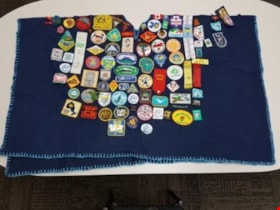
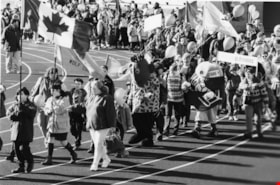
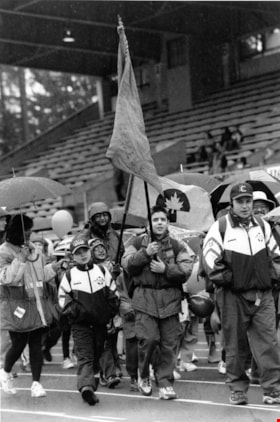
![Labour parade, [between 1936 and 1939] thumbnail](/media/Hpo/_Data/_Archives_Moving_Images/_Unrestricted/562-002-4.jpg?width=280)
![March for Hunger at Swangard Stadium, [2000] thumbnail](/media/hpo/_Data/_Archives_Images/_Unrestricted/535/535-2098.jpg?width=280)


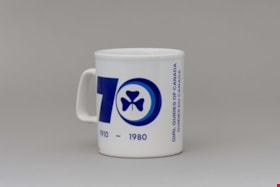
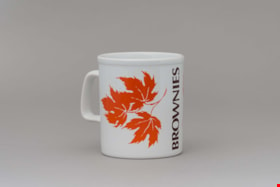
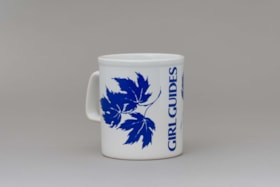
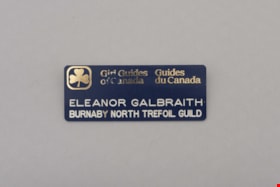
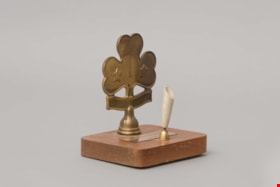
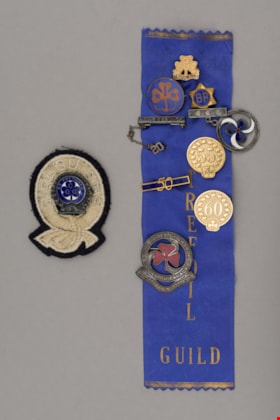
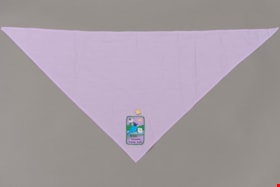
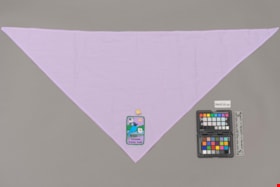
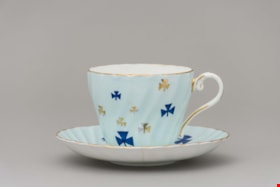
![Family in foggy Central Park, [1999] thumbnail](/media/hpo/_Data/_Archives_Images/_Unrestricted/535/535-3118-1.jpg?width=280)

![Interview with Shirley Cohn, [1926-2023] (interview content), interviewed 2023 thumbnail](/media/Hpo/_Data/_BVM_Sound_Recordings/Oral_Histories/2023_0016_0001_001.JPG?width=280)